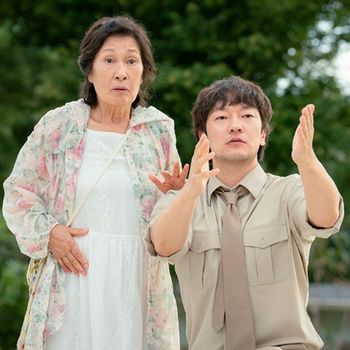In a world saturated with high-drama, high-speed dating shows, South Korea has quietly redefined the genre. With programs like "Single’s Inferno," "I’m Solo," and "Transit Love ("EXchange")," Korean dating reality shows have captured not only local audiences but also millions of international fans. Far from relying on shock value, these shows offer a slower, emotionally nuanced experience that reflects deeply rooted Korean values—an approach that’s turning into a global cultural export success story.

A Dating Show Like No Other? Why "Heart Pairing" Has Netizens Talking!K-Culture InsightsMar 31, 2025
The explosion of international interest in these programs is part of a larger trend: the continued rise of the Korean Wave, or Hallyu. Streaming platforms like Netflix, Disney+, and Viu have become conduits for global audiences to access Korea’s distinctive take on romance and relationships. And unlike their Western counterparts, these shows typically avoid overt sexuality or over-the-top antics. Instead, they lean into emotional restraint, quiet moments, and the cultural concept of “some” (썸)—the ambiguous, pre-relationship stage that Korean dating culture reveres.
📈 The Ratings Tell a Story
Domestically, Korean dating shows are breaking new ground, even overtaking powerhouse dramas in terms of popularity. In early 2025, "I’m Solo, Love Forever," a low-budget spin-off of the long-running "I’m Solo," surged to the top of Netflix Korea, surpassing even "Squid Game 2." This achievement is especially remarkable given that the show features non-celebrity participants with a focus on marriage rather than flirtation, suggesting a shift in audience priorities toward authenticity and long-term commitment.
Although traditional television viewership numbers are harder to track due to the dominance of streaming, select shows still report impressive figures. "I’m Solo" peaked at 4% viewership on cable television—a notable accomplishment in an era where many viewers have migrated online. Meanwhile, "Heart Signal," a franchise that has run for four seasons, recorded its highest ratings yet in its most recent installment, showing that longevity and slow storytelling can still win over viewers in a fast-content era.
Internationally, the numbers are equally impressive. "Single’s Inferno" became one of Netflix’s most-watched non-English shows by total hours viewed during its second season. Its unique premise—attractive singles stranded on a remote island with limited resources and plenty of emotional tension—has proven irresistible. This success has prompted a fourth season and confirms the show’s appeal to a global audience craving something more emotionally authentic.
🔢 Beyond Numbers: The Cultural Why
The emotional core of Korean dating shows is perhaps their greatest strength. Rooted in Confucian values that emphasize harmony, respect, and subtlety, these shows often highlight the emotional struggles and societal pressures that come with dating in modern Korea. Shows like "I’m Solo" don’t shy away from awkward conversations about marriage, family, and finances. In contrast, many Western shows often gloss over these realities in favor of steamy hookups and dramatic confrontations.
Cultural norms also play a pivotal role. Public displays of affection are still relatively uncommon in Korean society, and this is reflected in the reserved, often painfully slow pace at which romance unfolds onscreen. For many viewers—particularly international fans—this “slow-burn” dynamic is seen not as boring, but as refreshing. On Reddit, users from r/koreanvariety and r/Singlesinferno2 frequently praise the genre’s emotional depth, subtle communication styles, and the high level of mutual respect shown by participants
📺 Domestic Viewers Seek Relatability—and Realism

Korean audiences, however, often engage with these shows from a different perspective. Domestic reactions are deeply influenced by cultural etiquette, and viewers are quick to respond to perceived breaches in behavior. JunSeo from "Single’s Inferno 4," for example, was criticized for rudeness and insensitivity—a reaction that may be difficult for Western audiences to understand without cultural context. In contrast, viewers showed empathy toward OkSun in "I’m Solo" Season 24, even when her behavior was controversial, sparking discussions about gender roles and social expectations in Korean dating.
There’s also a strong appetite for realism. According to Naver blog reviews and Korean forums cited in the report, viewers gravitate toward non-celebrity participants and grounded storylines. The overwhelming popularity of "I’m Solo" stems from its portrayal of ordinary people with ordinary concerns—people who may be struggling with age, divorce, career stagnation, or simply loneliness.
Shows like "Transit Love," which reunite ex-couples under one roof, dig even deeper. Its second season was a major hit, with both domestic and international viewers drawn to the emotional messiness and raw vulnerability of former lovers re-examining their relationships. These storylines mirror the real-life struggles of many Koreans, adding a psychological depth rarely found in similar genres abroad.
Enjoy full access for just $1
Join over 10,000 active members!
🌟 Special Contents for Subscribers
 © 2025. All Rights Reserved.
© 2025. All Rights Reserved.











